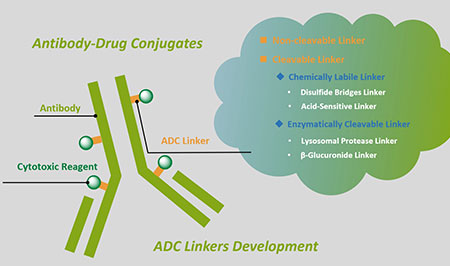1. Hopanoid-free Methylobacterium extorquens DM4 overproduces carotenoids and has widespread growth impairment
Alexander S Bradley, Sean M Caroll, Françoise Bringel, Stéphane Vuilleumier, Christopher J Marx, Emilie E L Muller, Paige K Swanson, Ann Pearson PLoS One . 2017 Mar 20;12(3):e0173323. doi: 10.1371/journal.pone.0173323.
Hopanoids are sterol-like membrane lipids widely used as geochemical proxies for bacteria. Currently, the physiological role of hopanoids is not well understood, and this represents one of the major limitations in interpreting the significance of their presence in ancient or contemporary sediments. Previous analyses of mutants lacking hopanoids in a range of bacteria have revealed a range of phenotypes under normal growth conditions, but with most having at least an increased sensitivity to toxins and osmotic stress. We employed hopanoid-free strains of Methylobacterium extorquens DM4, uncovering severe growth defects relative to the wild-type under many tested conditions, including normal growth conditions without additional stressors. Mutants overproduce carotenoids-the other major isoprenoid product of this strain-and show an altered fatty acid profile, pronounced flocculation in liquid media, and lower growth yields than for the wild-type strain. The flocculation phenotype can be mitigated by addition of cellulase to the medium, suggesting a link between the function of hopanoids and the secretion of cellulose in M. extorquens DM4. On solid media, colonies of the hopanoid-free mutant strain were smaller than wild-type, and were more sensitive to osmotic or pH stress, as well as to a variety of toxins. The results for M. extorquens DM4 are consistent with the hypothesis that hopanoids are important for membrane fluidity and lipid packing, but also indicate that the specific physiological processes that require hopanoids vary across bacterial lineages. Our work provides further support to emerging observations that the role of hopanoids in membrane robustness and barrier function may be important across lineages, possibly mediated through an interaction with lipid A in the outer membrane.
2. Preclinical Activity of SAR408701: A Novel Anti-CEACAM5-maytansinoid Antibody-drug Conjugate for the Treatment of CEACAM5-positive Epithelial Tumors
Béatrice Cameron, Hervé Bouchard, Souad Naimi, Catherine Devaud, Pierrick Rival, Laetitia Maçon, Cecile Combeau, Stéphanie Decary, Carlos García-Echeverría, Céline Amara, Céline Nicolazzi, Paul Ferrari, Eric Lacoste, Tarik Dabdoubi, Christophe Henry, Véronique Blanc, Eric Beys, Catherine Prades, Jean-François Mayaux, Alhassan Cassé, Anne-Marie Lefebvre, Pierre-François Berne, Claire Brillac Clin Cancer Res . 2020 Dec 15;26(24):6589-6599. doi: 10.1158/1078-0432.CCR-19-4051.
Purpose:Carcinoembryonic antigen-related cell adhesion molecule 5 (CEACAM5) is a glycoprotein that has limited expression in normal adult tissues, but is overexpressed in carcinomas of the gastrointestinal tract, the genitourinary and respiratory systems, and breast cancer. As such, CEACAM5 is an attractive target for antibody-based therapies designed to selectively deliver cytotoxic drugs to certain epithelial tumors. Here, we describe preclinical data for a novel antibody-drug conjugate (ADC), SAR408701, which consists of an anti-CEACAM5 antibody (SAR408377) coupled to a maytansinoid agent DM4 via a cleavable linker.Experimental design:The specificity and binding affinity of SAR408701 to human and cynomolgus monkey CEACAM5 were testedin vitro. The cytotoxic activity of SAR408701 was assessed in CEACAM5-expressing tumor cell lines and using patient-derived xenograft mouse models of CEACAM5-positive tumors. Pharmacokinetic-pharmacodynamic and pharmacokinetic-efficacy relationships were established. SAR408701 toxicity was evaluated in cynomolgus monkey.Results:SAR408701 bound selectively to human and cynomolgus monkey CEACAM5 with similar apparent Kd values (0.017 nmol/L and 0.024 nmol/L, respectively). Bothin vitroandin vivoevaluations showed that SAR408701 has cytotoxic activity, leading toin vivoefficacy in single and repeated dosing. Single doses of SAR408701 induced significant increases in the tumor expression of phosphorylated histone H3, confirming the tubulin-targeting mechanism of action. The overall toxicity profile of SAR408701 in cynomolgus monkey was similar to that observed after intravenous administration of DM4 alone.Conclusions:On the basis of these preclinical data, the ADC SAR408701 is a promising candidate for development as a potential treatment for patients with CEACAM5-positive tumors.
3. Phase III, randomized trial of mirvetuximab soravtansine versus chemotherapy in patients with platinum-resistant ovarian cancer: primary analysis of FORWARD I
A Oaknin, A Berkenblit, N Colombo, G E Konecny, A M Oza, B J Monk, P Pautier, D Lorusso, I Vergote, G Scambia, S Banerjee, J A Konner, J L Tanyi, K N Moore, C G Murphy, M J Birrer, J Wang, M Prasad-Hayes, P C Lim, H Hirte Ann Oncol . 2021 Jun;32(6):757-765. doi: 10.1016/j.annonc.2021.02.017.
Background:Mirvetuximab soravtansine (MIRV) is an antibody-drug conjugate comprising a folate receptor alpha (FRα)-binding antibody, cleavable linker, and the maytansinoid DM4, a potent tubulin-targeting agent. The randomized, open-label, phase III study FORWARD I compared MIRV and investigator's choice chemotherapy in patients with platinum-resistant epithelial ovarian cancer (EOC).Patients and methods:Eligible patients with 1-3 prior lines of therapy and whose tumors were positive for FRα expression were randomly assigned, in a 2 : 1 ratio, to receive MIRV (6 mg/kg, adjusted ideal body weight) or chemotherapy (paclitaxel, pegylated liposomal doxorubicin, or topotecan). The primary endpoint was progression-free survival [PFS, Response Evaluation Criteria in Solid Tumors (RECIST) version 1.1, blinded independent central review] in the intention-to-treat (ITT) population and in the prespecified FRα high population.Results:A total of 366 patients were randomized; 243 received MIRV and 109 received chemotherapy. The primary endpoint, PFS, did not reach statistical significance in either the ITT [hazard ratio (HR), 0.98, P = 0.897] or the FRα high population (HR, 0.69, P = 0.049). Superior outcomes for MIRV over chemotherapy were observed in all secondary endpoints in the FRα high population including improved objective response rate (24% versus 10%), CA-125 responses (53% versus 25%), and patient-reported outcomes (27% versus 13%). Fewer treatment-related grade 3 or higher adverse events (25.1% versus 44.0%), and fewer events leading to dose reduction (19.8% versus 30.3%) and treatment discontinuation (4.5% versus 8.3%) were seen with MIRV compared with chemotherapy.Conclusions:In patients with platinum-resistant EOC, MIRV did not result in a significant improvement in PFS compared with chemotherapy. Secondary endpoints consistently favored MIRV, particularly in patients with high FRα expression. MIRV showed a differentiated and more manageable safety profile than chemotherapy.







